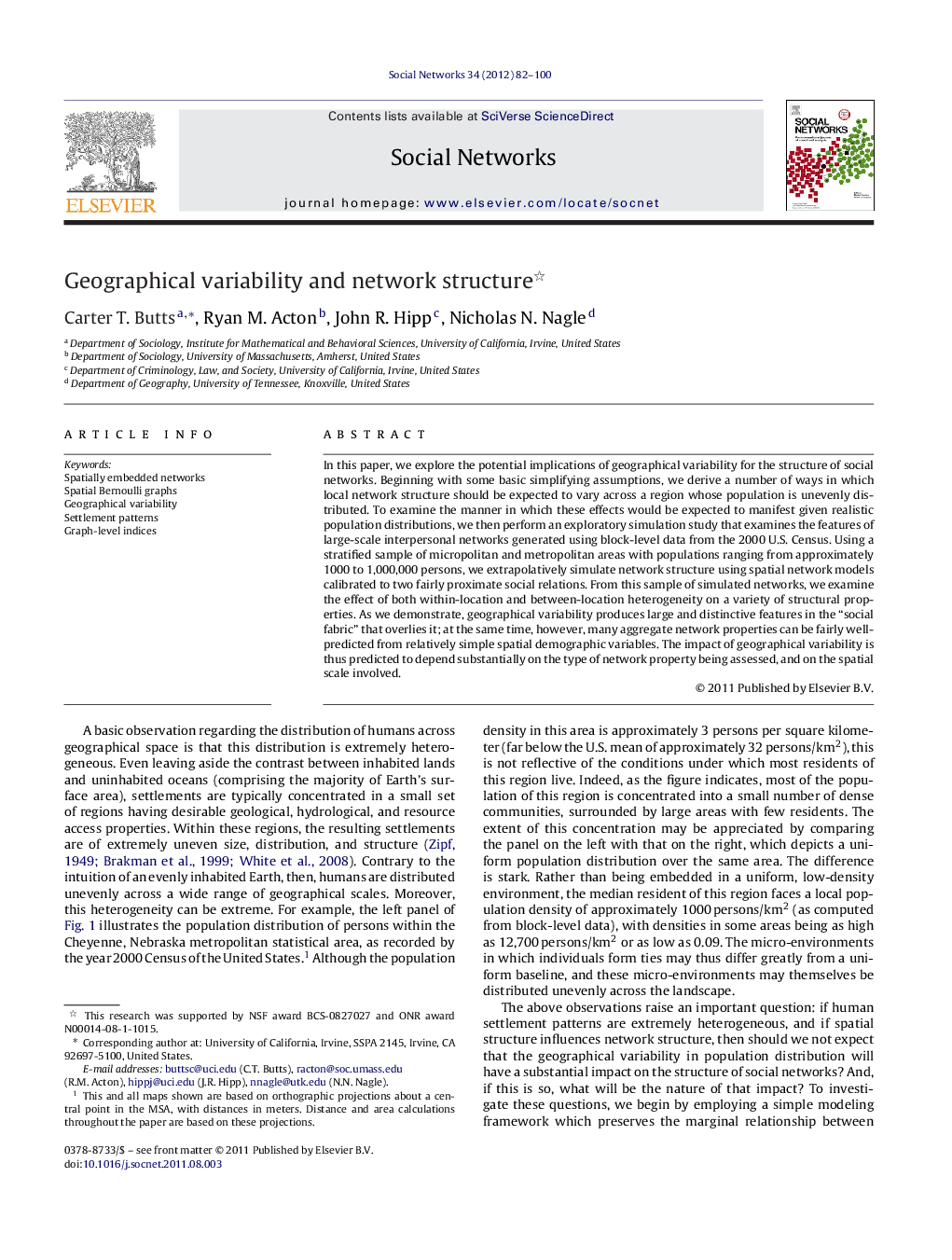| Article ID | Journal | Published Year | Pages | File Type |
|---|---|---|---|---|
| 1129292 | Social Networks | 2012 | 19 Pages |
In this paper, we explore the potential implications of geographical variability for the structure of social networks. Beginning with some basic simplifying assumptions, we derive a number of ways in which local network structure should be expected to vary across a region whose population is unevenly distributed. To examine the manner in which these effects would be expected to manifest given realistic population distributions, we then perform an exploratory simulation study that examines the features of large-scale interpersonal networks generated using block-level data from the 2000 U.S. Census. Using a stratified sample of micropolitan and metropolitan areas with populations ranging from approximately 1000 to 1,000,000 persons, we extrapolatively simulate network structure using spatial network models calibrated to two fairly proximate social relations. From this sample of simulated networks, we examine the effect of both within-location and between-location heterogeneity on a variety of structural properties. As we demonstrate, geographical variability produces large and distinctive features in the “social fabric” that overlies it; at the same time, however, many aggregate network properties can be fairly well-predicted from relatively simple spatial demographic variables. The impact of geographical variability is thus predicted to depend substantially on the type of network property being assessed, and on the spatial scale involved.
► We perform extrapolative simulation of social networks from U.S. Census data. ► We examine the effect of heterogeneity in population density on network structure. ► We show that many network properties are well-predicted by simple spatial statistics. ► We find that spatial heterogeneity at small scales has effects on local network structure. ► The impact of geography depends on both the network property and spatial scale involved.
